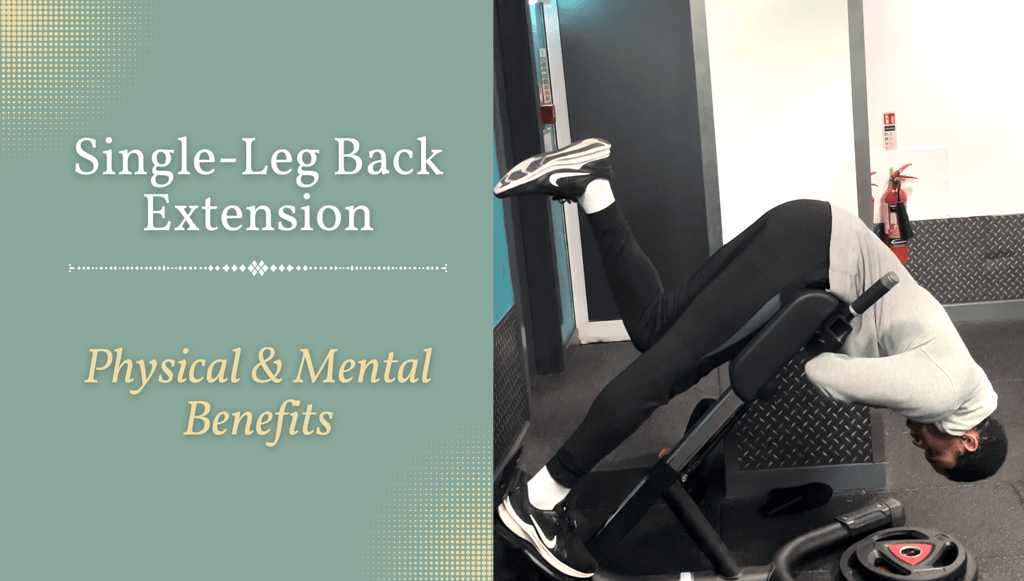Add your promotional text...
Correct Muscle Imbalances With Single-Leg Back Extensions - Physical and Mental benefits
6/17/20235 min read


Do you ever feel like you’re not seeing progress in your fitness routine, despite putting in the work? It’s possible that muscle imbalances are holding you back. Even if you don’t realize it, these imbalances can cause issues during exercises like squats, leading to overcompensation with your stronger side and underdevelopment of your weaker side.
That’s where the single-leg back extension comes in. This exercise allows you to work each leg separately, helping to identify and target any differences in strength and stability. By doing so, you can specifically target and strengthen your weaker side, thus reducing any muscle imbalances.
In this article, we’ll explore the physical and mental benefits of single-leg back extensions and how they can correct muscle imbalances, and also how to perform the exercise correctly.
If you have any questions or need some assistance, feel free to submit a comment or send us a message here.
In Conclusion
Each variation targets the chest muscles and surrounding areas differently, and they all have their unique benefits. You can choose which of the variations suits you best. Although it’s essential to choose one that aligns with your fitness goals and abilities. It’s also crucial to use proper form and technique to avoid injury and maximize the effectiveness of the exercise.
All these chest press variations improve your upper body strength, stability, and endurance. They are a great addition to any workout routine, whether you’re a beginner or an experienced athlete.
Here’s how this exercise can help to correct muscle imbalances:
Strengthening the weaker side: By isolating one leg at a time during the exercise, you target and strengthen the muscles on the weaker side of your body. This helps to rebalance the strength between your left and right sides, reducing any existing imbalances.
Enhancing stability: Single leg back extensions require a significant amount of stability and balance to execute properly. By regularly performing this exercise, you can improve the stability and control of the muscles surrounding your spine and hips. This can help address any imbalances that may exist due to a lack of stability on one side.
Activating the glutes: The back extension exercise primarily targets the gluteal muscles, particularly the gluteus maximus. Imbalances in the strength and activation of these muscles can lead to compensatory patterns and muscle imbalances. By focusing on each leg individually, you can ensure proper activation and strength development of the gluteal muscles on both sides.
Engaging the hamstrings: The hamstrings play a crucial role in hip extension and knee flexion. Imbalances in hamstring strength can affect your posture and movement patterns. Single leg back extensions specifically engage the hamstrings while targeting one leg at a time. By performing this exercise, you can help correct any discrepancies in hamstring strength and promote a more balanced musculature.
Improving core stability: The back extension exercise requires core stabilization to maintain proper form and alignment. Strengthening your core muscles, including the deep stabilizers such as the transverse abdominis, can contribute to better overall stability. Addressing core imbalances can assist in correcting any muscle imbalances that may be present in the surrounding muscle groups.
Physical Benefits of Single-leg Back Extension
What’s truly special about single-leg back extensions is the way they challenge your body in a unique way. By performing the exercise on one leg, you engage your core muscles and test your balance and stability. It’s a great way to counteract the effects of sitting and to build strength and resilience in your body.
How To Perform Single-Leg Back Extensions
The Power Of Perseverance And Consistency With Single-Leg Back Extension
Remember, progress takes time and consistency. Don’t get discouraged if you don’t see immediate results. Keep pushing yourself and challenging your limits, and you will eventually see the changes you desire.
The single-leg back extension is a testament to the power of perseverance and determination. Each repetition is a step towards a stronger, healthier body.
So, if you’re looking for a new exercise to add to your routine, give single-leg back extensions a try. With each session, you’ll feel your body growing stronger and your confidence soaring higher. You’ll be amazed at the difference they can make in your body and your mind, and you’ll discover a new level of strength and confidence that you never knew existed.
Take that first step today and commit to making the most of this exercise.
Adjust the back extension machine to your height, so that when you lie down on the machine, your hips are just at the edge of the pad.
Lie down on the machine face down with your feet and ankles secured under the footpads.
Bent one leg back and hold it in the air, while keeping your knee next to the other one and your foot flexed.
Cross your arms on top of your chest.
Lean your body forward until you feel the stretch in your hamstrings
Hold the position for a moment, then slowly lift your upper body until it’s in a straight line and you feel the contraction in your lower back and glutes.
Repeat the exercise for your desired number of repetitions, then switch legs and repeat on the other side.
Complete 8-12 repetitions on each side, or as many as you feel comfortable with.
Rest for 30-60 seconds between sets, then repeat for a total of 2-3 sets.
NOTE
Remember to keep your movements slow and controlled, and to engage your core muscles throughout the exercise.
Avoid arching your back or using momentum to lift your torso, as this can lead to injury.
With practice, you’ll become more comfortable with this exercise and start to experience the benefits it offers.
Mental Benefits of Single-leg Back Extension
Single-leg back extension isn’t just about the physical benefits – it’s also a powerful tool for building mental toughness and determination. It requires focus, concentration, and discipline to perform this exercise correctly, and by doing so, you’ll build the mental fortitude that can help you overcome any challenge in life.
Here are some of the mental benefits of the exercise that can help correct muscle imbalances:
Better understanding of your body: When you do single leg back extensions, you become more aware of how your muscles are working and enhanced body awareness can help you identify any muscle imbalances you might have. You’ll start to notice how certain muscles feel stronger or weaker, allowing you to focus on correcting those imbalances.
Improved sense of balance: Single leg back extensions challenge your balance as you engage specific muscles. By practicing this exercise, you can improve your overall balance and stability. This, in turn, helps address muscle imbalances by ensuring all muscles work together harmoniously.
Better mind-muscle coordination: By performing single leg back extensions, you’re training your brain and muscles to work together more effectively. This coordination becomes vital in addressing muscle imbalances since it allows different muscle groups to synchronize and work in harmony. With improved coordination, you’ll be better equipped to correct any imbalances.
Heightened mind-muscle connection: Single leg back extensions require you to focus on specific muscles, ensuring they’re properly engaged during the exercise. This concentration helps strengthen the connection between your mind and muscles. With an improved mind-muscle connection, you can more effectively activate and control the targeted muscles, facilitating the correction of muscle imbalances.
Increased confidence: As you make progress in addressing muscle imbalances through single leg back extensions, you’ll likely experience a boost in confidence. Noticing improvements in your strength and stability can have a positive impact on your self-esteem, leading to greater overall confidence in your physical abilities.
